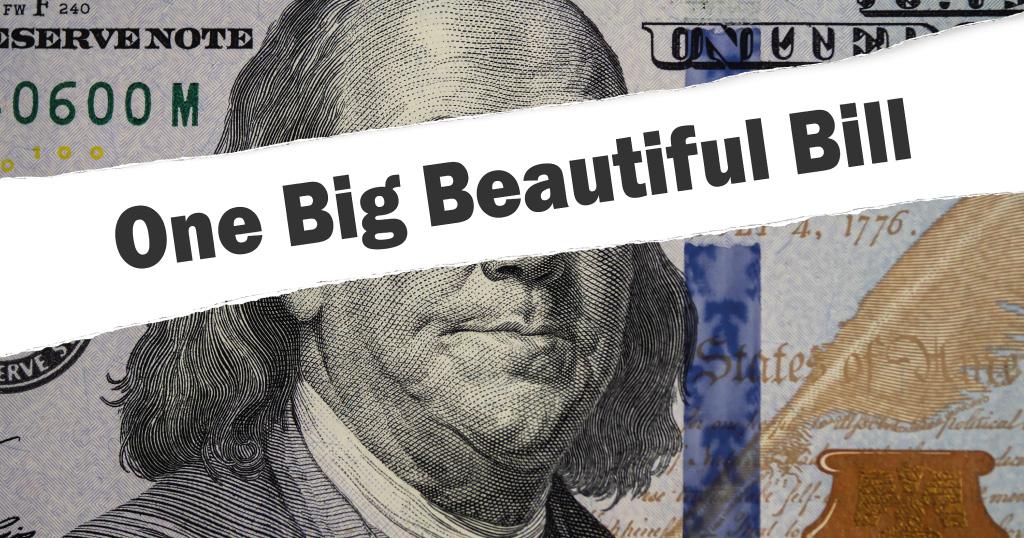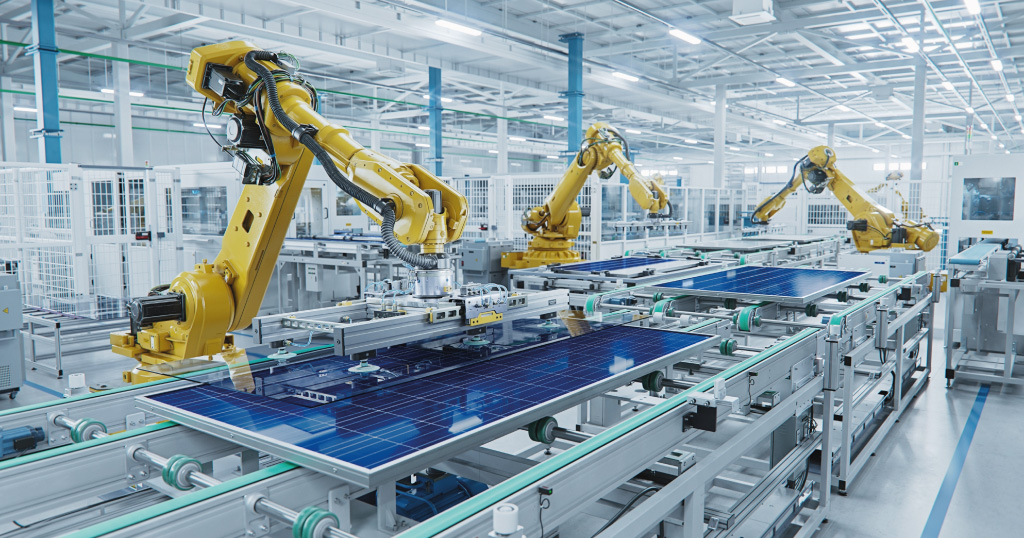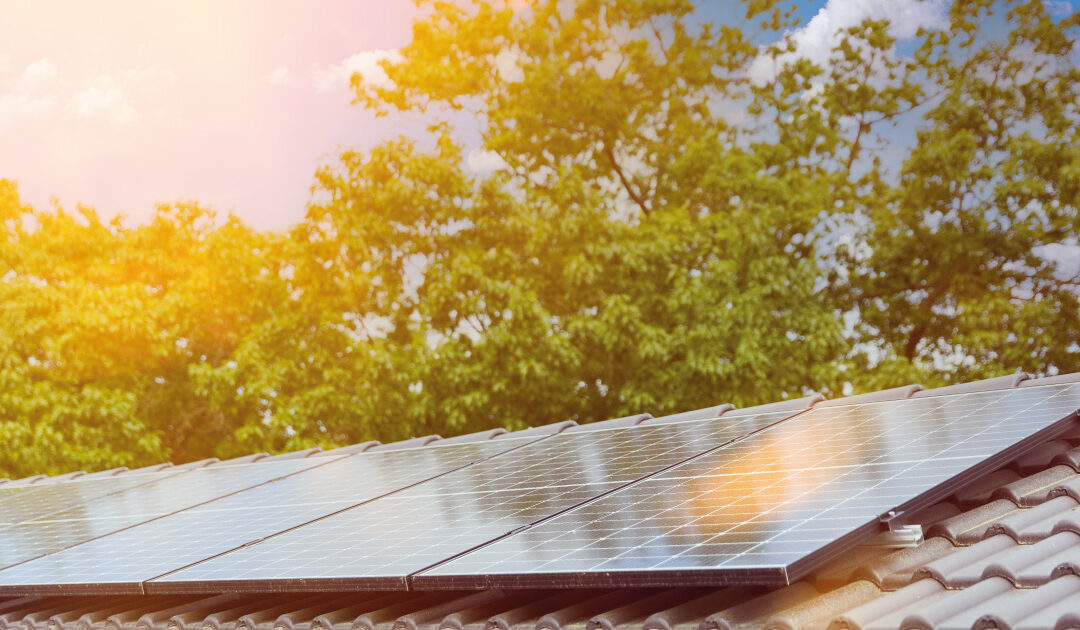If you’re a solar enthusiast, then you’ve faced some bad news lately. The recently signed One Big Beautiful Bill (OBBB) shook up the solar industry. But not everything is doom and gloom. In fact, we believe there are several sunny days ahead of us!
In this blog, we’ll discuss the impact of the recent legislation and how the solar industry is fighting back!

What did the One Big Beautiful Bill do to the solar industry?
We discuss this subject in more detail in our article: How the One Big Beautiful Bill is Shaking up the American Solar Industry. But here’s a summary.
The OBBB cuts Biden-era incentives ahead of schedule. You’ve probably heard about the solar investment tax credit (ITC) from the Inflation Reduction Act (IRA). It incentivizes solar investments (like rooftop solar) by reducing the taxes you owe by 30% of the net cost of installation. This simple but effective tax credit reduces the cost of the average rooftop solar project by around $9,000.
Originally, the ITC was going to gradually phase out by 2035. But now under the OBBB, you have until December 31, 2025, to install a system and claim the tax credit.
This new phase-out has accelerated the market. EnergySage is an online marketplace connecting homeowners with solar installers. Ever since the OBBB was signed into law, they have experienced a surge of 205%! That is a 205% increase in homeowners seeking solar installers compared to this time last year.
“It’s clear that homeowners are rushing to take advantage of this tax credit before it goes away. The urgency to purchase and install residential solar systems before the end of the year is driving real changes in market behavior, putting pressure on installers and utilities as demand surges and timelines tighten.”
~ Josh Levine, Chief Marketing Officer of EnergySage.
We’re glad people are adopting solar and achieving their green energy dreams, but… not like this. You should choose to go solar when you’re ready to. Whether that means emotionally, financially, and/or professionally.
We anticipate a sudden slowdown in the industry as soon as we hit January. However, most in the industry are optimistic that we will steadily start growing again in the second half of 2026.
Secondly, new policies from the Department of the Interior have ground federal solar projects to a halt.
Secretary of the Interior Doug Burgum announced that all solar projects on public lands must be reviewed by him. This is needlessly inefficient and is most certainly intended to tie solar projects up in bureaucracy. It would be like if the CTO of a national company had to review every single IT ticket.
However, this doesn’t just stop solar development on federal lands. Even if someone built a solar farm 100% on privately owned land, they would still need federal approval for transmission lines.

Thankfully, several states are stepping up to help solar development.
Colorado is accelerating solar projects by streamlining permitting and advancing utility-scale procurement. The goal is to provide reliable and affordable energy to Colorado households. Energy prices are increasing all over the United States. Some federal policies are projected to increase average Colorado household energy costs by as much as $500 per year by 2035.
So Colorado is leveraging their Public Utility Commissions to fast-track solar investment. They want to get as many utility-scale solar projects on line as soon as possible to receive federal tax credits. However, even after the federal incentives end, these projects will strengthen the local economy, create local jobs, and improve grid reliability.
Secondly, Colorado also wants more people to adopt rooftop solar. So they created the Colorado Energy Savings Navigator to help Coloradans save money. This online service helps determine what tax credits, energy rebates, and energy bill assistance programs residents qualify for.
The federal tax credit may be ending, but there are still energy rebates and various state programs you can take advantage of.
Unfortunately, Virginia does not have one centralized resource for helping you save money on energy. Hopefully, Colorado’s work will inspire more states to do so.
Virginia does have a few helpful incentives. For example, homeowners can sell Solar Renewable Energy Certificates (SERCs) for around $45-$70 each. Each certificate represents 1,000 kWh produced by your system. Most rooftop systems generate around 13 certificates each year. We have a video to help you register for SERCs.
Virginia does have various rebates, but most are geared towards businesses. However, there are some really easy ones you might be missing out on. For example, Virginia Natural Gas offers a $50 rebate for simply installing a Wi-FI-enabled smart thermostat.
As your local solar company in Virginia Beach, we want you to get the highest return on your investment. Right now, the best way to do so is with net-metering.
If the Federal Government isn’t Supporting Clean Energy, Why are the States?
Many in the industry would say that the federal government is hindering clean energy development. So why are the states fostering such investments?
What’s even more surprising is how many of these pro-clean energy state policies are bipartisan. You know how hard it is to find something Americans from both sides of the aisle agree on?
The number one topic republicans and democrats agree on is how divided we are. According to a Gallup poll, 80% of U.S. adults believe we are deeply divided on core values.
But the reasons are simple. Firstly, as you saw above, green energy combats rising energy prices. Secondly, green energy protects states from extreme weather events by strengthening the grid. Thirdly, energy development is fundamental for economic development.
Some states, like Oregon, are investing in microgrids to improve their grid.
Microgrids are local, self-contained energy disruption and generation systems. They can coordinate with the larger grid to ease its burden. Or it can operate independently in a process known as islanding.
If you have a residential solar system with a battery back-up, you basically have a house-sized microgrid. During peak sunlight hours, you are producing more power than you use. It’s either stored in the battery or distributed to your neighbors. This is the basis for net-metering, you’re giving electricity back to the grid. If you experience a power outage, your home disconnects from the grid (islanding) and uses its stored energy.
Oregon currently has no community-owned or operated microgrids. But this past July, their legislature voted with overwhelming bipartisan support to implement a microgrid strategy.
As we explored in How Solar Microgrids Can Save Communities, microgrids make their energy infrastructure much more resilient to disruptions. Microgrids also help strengthen the aging main grid.
The vast majority of the US grid was constructed during the 1960s and 1970s. Technology from that time was expected to last around 50 years. And here we are over 50 years later! Our infrastructure is much more susceptible to extreme weather events. Major power outages are becoming more frequent and longer-lasting. According to data gathered by Construction Physics from PowerOutage.us, the average utility customer experienced 410 minutes without power in 2023. However, in 2024, that number jumped to 647 minutes. That’s an increase of over 50%!
So our entire nation’s electrical infrastructure needs an upgrade. But instead of ripping out the entire grid and replacing it, microgrids can upgrade it piece by piece.

States like Ohio know that energy development leads to economic development.
Generative AI is ubiquitous these days. But it takes a lot of computing power. All that processing and synthesis take place within data centers. These are essentially advanced warehouses full of servers, cooling equipment, and specialized computers. When you ask ChatGPT to write an email, your prompt goes to a server within a data center. That server generates a response which is sent back to you.
That’s all to say that the rise in generative AI has led to a boom in the data center industry. And the number problem for data centers is access to power. You see where this is going.
Ohio State Senators Mark Romanchuk (R-Ontario) and Kent Smith (D-Euclid) introduced a bill to create a community energy and pilot program. In this context, community energy includes community solar. Not only will that foster investment, but it will also make electric bills more affordable.
“Ohio is at an inflection point. Our state is attracting major investments in advanced manufacturing and data centers, and with that comes an urgent need for more electricity — produced here in Ohio. [Our bill] is about building a smarter, more resilient energy system that taps into our own resources and supports local communities. This pilot program will empower local decision-making, reduce our reliance on imported power, and position Ohio as a leader in energy innovation.”
~ Ohio Republican State Senator Mark Romanchuk.
Why are we Optimistic About the Future of Solar?
A lot of these positive policies are still early in development. They might get shot down before they can make a difference. But despite all these obstacles, solar is still growing.
According to the Federal Energy Regulatory Commission (FERC), solar and wind accounted for 90.9% of new energy generation added in the first five months of 2025. Compare that with natural gas which only accounted for 9%; and oil which made up only 0.1%. Take that fossil fuels!
That report from the FERC goes on to say that there is a high probability that solar will stay America’s fastest growing resource. Meanwhile, coal and oil are projected to decrease. Natural gas is likely to expand but only marginally.
Solar energy is becoming increasingly cheaper and more efficient. When tariffs dominated the headlines, many solar companies invested in a domestic supply chain. Solar is just good for everyone and many states are realizing this.
Want to be Part of the Energy Revolution?
If you want to do your part to support a cleaner, greener world, consider residential solar. We’re one of the best solar companies in Virginia Beach (as ranked by Solar Power World).
Start with a site assessment. We’ll set up an appointment that’s convenient for you. We’ll do a walk-through together, analyzing your electrical consumption and your property’s potential for solar.

